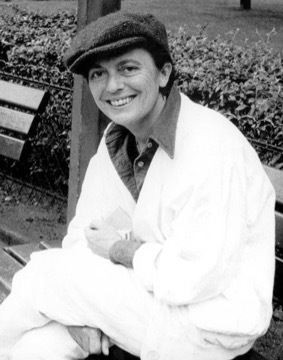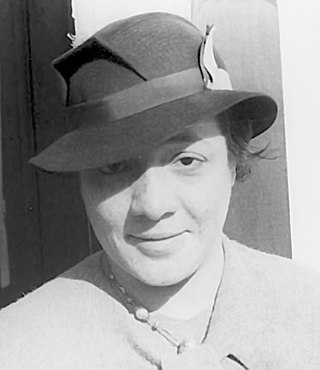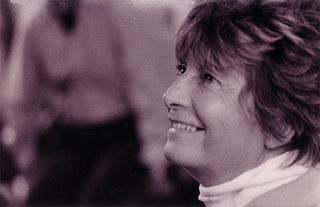
Cabaret is a form of theatrical entertainment featuring music, song, dance, recitation, or drama. The performance venue might be a pub, a casino, a hotel, a restaurant, or a nightclub with a stage for performances. The audience, often dining or drinking, does not typically dance but usually sits at tables. Performances are usually introduced by a master of ceremonies (M.C.). The entertainment, as performed by an ensemble of actors and according to its European origins, is often oriented towards adult audiences and of a clearly underground nature. In the United States, striptease, burlesque, drag shows, or a solo vocalist with a pianist, as well as the venues which offer this entertainment, are often advertised as cabarets.

Montmartre is a large hill in Paris's northern 18th arrondissement. It is 130 m (430 ft) high and gives its name to the surrounding district, part of the Right Bank. Montmartre is primarily known for its artistic history, for the white-domed Basilica of the Sacré-Cœur on its summit, and as a nightclub district.

Pigalle is an area in Paris, France, around the Place Pigalle, on the border between the 9th and the 18th arrondissements. It is named after the sculptor Jean-Baptiste Pigalle (1714–1785).

The Place Pigalle is a public square located in the 9th arrondissement of Paris, between the Boulevard de Clichy and the Boulevard de Rochechouart, near Sacré-Cœur, at the foot of the Montmartre hill.

A gay bar is a drinking establishment that caters to an exclusively or predominantly lesbian, gay, bisexual, transgender or queer (LGBTQ+) clientele; the term gay is used as a broadly inclusive concept for LGBTQ+ communities.

Monique Wittig was a French author, philosopher and feminist theorist who wrote about abolition of the sex-class system and coined the phrase "heterosexual contract". Her groundbreaking work is titled The Straight Mind and Other Essays. She published her first novel, L'Opoponax, in 1964. Her second novel, Les Guérillères (1969), was a landmark in lesbian feminism.

Ada Beatrice Queen Victoria Louise Virginia Smith, better known as Bricktop, was an American dancer, jazz singer, vaudevillian, and self-described saloon-keeper who owned the famous nightclub "Chez Bricktop" in Paris from 1924 to 1961, as well as clubs in Mexico City and Rome.

Michèle Causse was a French activist, author, and self-described radical lesbian.

A nightclub is a club that is open at night, usually for drinking, dancing and other entertainment. Nightclubs often have a bar and discothèque with a dance floor, laser lighting displays, and a stage for live music or a disc jockey (DJ) who mixes recorded music. Nightclubs tend to be smaller than live music venues like theatres and stadiums, with few or no seats for customers.
The Gouines Rouges are a French radical feminist lesbian movement.

Paris, the capital of France, has an active LGBT community. In the 1990s, 46% of the country's gay men lived in the city. As of 2004, Paris had 140 LGBT bars, clubs, hotels, restaurants, shops, and other commercial businesses. Florence Tamagne, author of "Paris: 'Resting on its Laurels'?", wrote that there is a "Gaité parisienne"; she added that Paris "competes with Berlin for the title of LGBT capital of Europe, and ranks only second behind New York for the title of LGBT capital of the world." It has France's only gayborhoods that are officially organized.

A lesbian bar is a drinking establishment that caters exclusively or predominantly to lesbian women. While often conflated, the lesbian bar has a history distinct from that of the gay bar.
Frede was a French host and manager of cabarets in Paris and Biarritz. Openly lesbian, Frede was the first to allow women to dance together in a classic cabaret. She is known for her relationships with actresses Marlene Dietrich, Zina Rachevsky, Lana Marconi, and María Félix. She has been featured as a character in Patrick Modiano's books.
Le Carrousel de Paris was a Parisian cabaret most famous for its 1950s revues of cross-dressing and trans performers such as Coccinelle. It definitively ceased its dinner-show activity in 2016.
New Moon was a Parisian nightclub, located at 66 Rue Pigalle in the Place Pigalle, that started in the late 19th-century as a headquarters for Impressionist artists. In the 20th century, it became a jazz club and then a lesbian cabaret, before converting to a well-known alternative rock club in the 1980s. It closed in 1995.
Le Monocle was a Parisian lesbian bar, opened in the 1920s by Lulu de Montparnasse. Located on Boulevard Edgar-Quinet, it closed during the occupation of France by Germany in World War II.

Le Hanneton was a popular Parisian lesbian bar of the 1890s and early 1900s at 75 Rue Pigalle in the Montmartre district. It was owned and run by Madame Armande Brazier, who was the subject of a well-known lithograph by Toulouse Lautrec, Au Hanneton.

Palmire Louise Dumont, generally known as Madame Palmyre or Palmyre, was the manager and owner of two early gay bars in Paris in the 1890s–1900s: the lesbian bar La Souris and the mixed Palmyr's Bar. She was an iconic figure in creating the culture of "gay Paree" in Montmartre during the Belle Époque.

Le Rat Mort was a popular cafe/restaurant and cabaret in Paris in the 19th and early 20th centuries. Located in the Place Pigalle in the Montmartre District, it was frequented by artists, writers, actors, artist models, and prostitutes, and was a gathering place for lesbians in the evenings. Paintings and sketches inspired by the cafe and its customers included work by Toulouse Lautrec, Maxime Dethomas, Auguste Chabaud and Maurice de Vlaminck.














